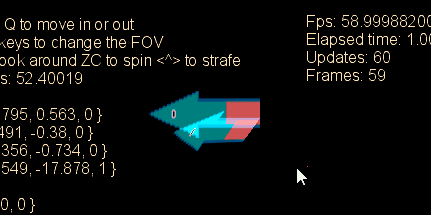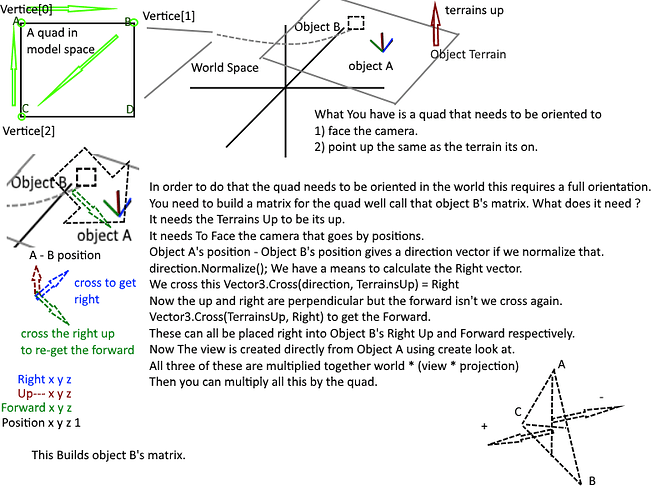Almost! But cannot use the billboard…
I managed to create the quad, to understand TriangleList and TriangleStrip, to display it, to texture it, to make it deal with alpha!
I see the sprite, I can move the camera, rotate the camera…
But if I apply a billboard, it disappears.
My quad :
`
quadVertices = new VertexPositionTexture[4];
quadVertices[0].Position = new Vector3(-1, -1, 0); // Lower left
quadVertices[1].Position = new Vector3(-1, 1, 0); // Upper left
quadVertices[2].Position = new Vector3(1, -1, 0); // Lower right
quadVertices[3].Position = new Vector3(1, 1, 0); // Upper right
quadVertices[0].TextureCoordinate = new Vector2(0, 1);
quadVertices[1].TextureCoordinate = new Vector2(0, 0);
quadVertices[2].TextureCoordinate = new Vector2(1, 1);
quadVertices[3].TextureCoordinate = new Vector2(1, 0);
`
How I display the quad:
mySpriteEffect.View = pView;
mySpriteEffect.Projection = pProjection;
mySpriteEffect.World = pWorld;
//mySpriteEffect.World = Matrix.CreateBillboard(Vector3.Zero, cameraPosition, pWorld.Up, pWorld.Forward);
mySpriteEffect.Texture = pTexture;
// No need for this, but it will work with advanced effect with multiple passes
foreach (var pass in mySpriteEffect.CurrentTechnique.Passes)
{
pass.Apply();
graphics.GraphicsDevice.DrawUserPrimitives(
PrimitiveType.TriangleStrip,
pQuad,
0,
2);
}
My camera is at 0,0,10.
My world is : Matrix.Identity
My view is:
view = Matrix.CreateLookAt(
cameraPosition,
targetPosition,
Vector3.Up
);
view = view * Matrix.CreateRotationY(camRotation);
Target position is 0,0,0.
My projection is:
projection = Matrix.CreatePerspectiveFieldOfView(
MathHelper.ToRadians(45f),
16f/9f,
1f,
100f
);
Any idea?
If I compare Matrix.Identity with the result of CreateBillboard, all seems inverted…

 it’s working only if the quad is at 0,0,0 of course…
it’s working only if the quad is at 0,0,0 of course…
